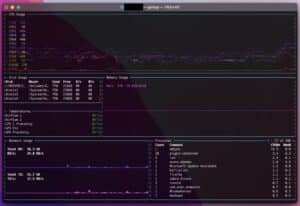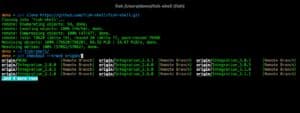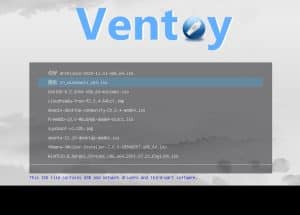Understanding how Linux uses memory is key for developers, sysadmins, and performance engineers. Two terms often seen in memory usage outputs—buffer and cache—are sometimes misunderstood or used interchangeably. However, they serve very different purposes within the operating system.
This guide dives deep into what buffers and caches really are in Linux, how they behave, how to observe them in real-time, and why Linux intentionally fills your memory with them.
🧾 What Is a Buffer?
A buffer is a temporary memory region used to store metadata or raw data during input/output (I/O) operations. In Linux, buffers are primarily used for write operations to the disk or network, helping smooth the flow of data between slower and faster devices.
When transferring data from a user-space application to the disk, Linux does not write the data immediately. Instead, it stores it in a buffer and flushes it to disk later. This technique increases performance and avoids the cost of frequent disk I/O operations.
In essence: A buffer is designed to help manage data in transit.
Typical Uses:
- Writing files to disk
- Network transmission queues
- I/O block buffering
📦 What Is a Cache?
A cache, on the other hand, holds frequently accessed data that has already been read from disk. Instead of fetching the same data repeatedly from slower storage, Linux keeps it in RAM, making subsequent access significantly faster.
Caches play a key role in read-heavy applications. For instance, when you read the same configuration file multiple times, Linux can serve it from memory without touching the disk again.
In essence: A cache holds previously accessed data to speed up future access.
Typical Uses:
- File system cache
- Page cache
- Application-level object caches
🔍 Key Differences Between Buffer and Cache
| Feature | Buffer | Cache |
|---|---|---|
| Primary Role | Temporary holding area for data being transferred | Storage of previously accessed data for faster reuse |
| Main Focus | Write optimization and I/O scheduling | Read optimization and fast retrieval |
| Data Type | Metadata and raw I/O data | Frequently accessed file contents |
| Management Strategy | FIFO / FCFS | LRU (Least Recently Used), LFU (Least Frequently Used) |
| Typical Location | RAM, but distinct from cache | RAM (often same physical memory, different logic) |
| Speed Benefit | Minimizes write latency | Greatly improves read performance |
| Used in | Disk I/O, networking buffers | Page caching, file caching, application cache |
| Visible via | /proc/meminfo, vmstat, free | Same tools as buffer |
| Eviction Policy | Less complex, simpler flush policies | Sophisticated eviction algorithms |
📊 Observing Buffer and Cache in Linux
You can monitor buffer and cache usage on your Linux system using tools like:
free -h
vmstat 2
cat /proc/meminfoExample Output with free -h
total used free shared buff/cache available
Mem: 7.7G 1.1G 3.3G 50M 3.3G 6.0Gused: Memory used by running processesbuff/cache: Memory used by buffer and cache (reclaimable if needed)available: Memory truly available to applications
Linux shows buffer and cache as “used” memory because it is actively used, but it’s also reclaimable instantly when more RAM is needed.
🧪 Practical Demonstration: Buffer vs Cache
Let’s run a simple demo using vmstat and dd to show how buffer and cache behave differently.
Step 1: Clear File System Cache
sudo sync
echo 3 | sudo tee /proc/sys/vm/drop_cachesThis clears all caches (pagecache, dentries, inodes).
Step 2: Monitor in Real Time
vmstat 2Focus on the buff and cache columns.
Step 3: Simulate Disk Read (Buffer Increase)
sudo dd if=/dev/sda of=/dev/null bs=100M count=10Watch how buff increases as the kernel buffers data being read from disk.
Step 4: Simulate File Write (Cache Increase)
dd if=/dev/zero of=testfile bs=100M count=10Now cache increases, as written data is stored in the page cache before being flushed to disk.
🧠 Why Linux Uses So Much RAM for Cache?
Many users are surprised to see nearly all their RAM “used” in Linux, but that’s intentional. Linux aggressively uses unused RAM for caching files. If an application suddenly requires memory, Linux reclaims it from the cache seamlessly.
Memory used for buffers and cache is not wasted — it’s a performance optimization.
🧩 Summary
- Buffer: temporary storage for data in transit, especially for writes.
- Cache: temporary storage for frequently accessed data to speed up reads.
- Linux treats both as reclaimable, so you never need to manually “free” memory.
- Use
free -h,vmstat, and/proc/meminfoto analyze memory behavior.











